Brighten your aquarium with these colorful and popular types of Guppy fish and follow these special care tips for a healthy tank from this comprehensive guppy care guide.
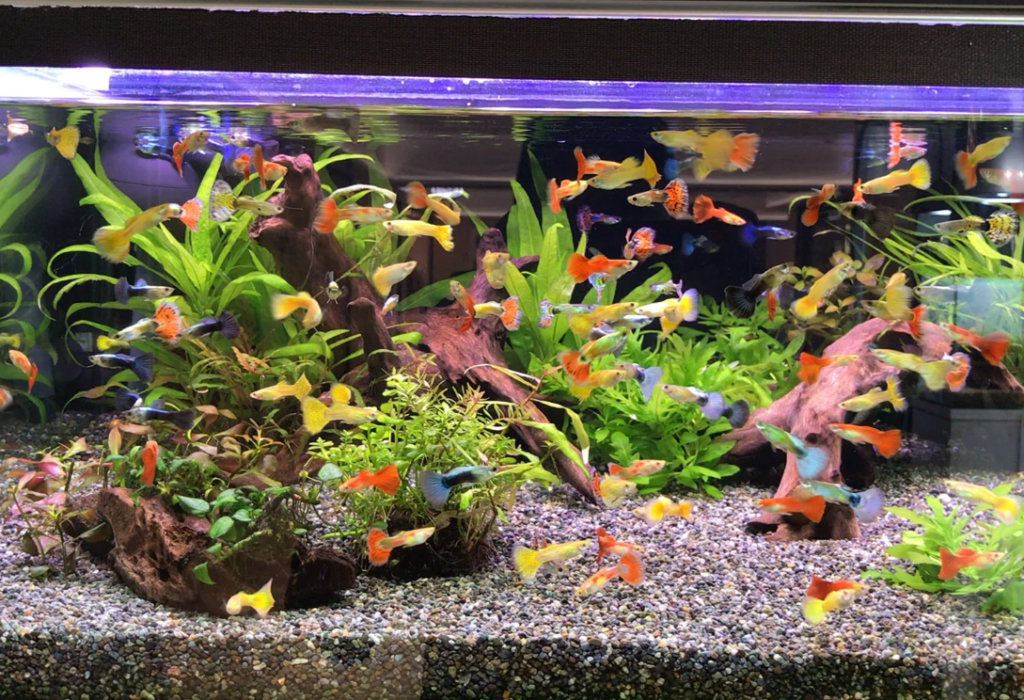
Hey, fish hobbyist and enthusiast! Welcome to another review of your favorite underwater pets. If you’ve followed my guides for the last two months, then you’re no stranger to the calm and mild-mannered popular guppies.
This review contains the 20 most popular types of guppies, including their physical traits, which are necessary for easy identification, and care requirements for designing an ideal community aquarium of guppy types.
Do you want to watch the top 10 guppies from this article instead of reading it? Checkout the video below from our YouTube Channel, be sure to Subscribe For More Great Fishkeeping Content:
Fancy Guppy

I’m opening this guide with the famous fancy guppies, which come in a range of interesting physical traits from coloration to fin structure and scale type. So, when you’re searching for “the fancy guppy,” know that it could be a number of the colorful guppy varieties.
These fancy guppies are ideal for beginners and experienced aquarium hobbyists despite their specialized care tips. Here’s how to maintain them.
Fancy Guppy Care Tips
Use a 10-gallon tank with clean water and fine substrates like gravel and sand. You must also add decor with smooth edges to avoid hurting their typically large fancy tail fins.
Now, let’s highlight individual types of fancy guppies and how you can identify them.
Delta Tail Guppy

You can identify the Delta Tail Guppy by its triangle-shaped tail despite its variety of colors. Many fancy guppies have this Delta Tail feature in various colorations.
This colorful and unique physical appearance makes this species a beloved aquarium pet. If you want its physical features to pop, you must maintain optimal tank care.
Delta Tail Guppy Care Tips
Maintaining the right water quality for a healthy Delta Tail guppy is about keeping stable water parameters. The ideal parameters are lukewarm waters between 72 – 82℉, moderately hard, and slightly alkaline at 7 – 7.8 pH levels.
Halfmoon Guppy

If your reason for choosing this variety is to give guppy shows in your aquarium, then you can get this fancy Guppy. The Halfmoon Guppy has a dramatic tail fin that spreads like a halfmoon and comes in different colors. Its bright and bold physical features make the Halfmoon species the ideal aquarium guppies.
Halfmoon Guppy Care Tips
You must pay special attention to the Halfmoon guppy fin care during maintenance because that’s its most prominent feature. Also, it’s the most likely to suffer physical injury in a poorly designed tank. So, use only soft-edge decor and smooth substrates.
Cobra Guppy


Another fancy guppy variety you’d enjoy having in your tank is any of the King Cobra exotic guppy types. They have unique scale tones mimicking a cobra pattern. If you need a tough guppy with low-maintenance needs, the Cobra Guppy is the one.
Cobra Guppy Care Tips
Follow these cobra care tips for your pet’s healthy growth and living. Maintain gentle water flow because strong currents can suck in your Cobra guppies. They love slightly alkaline waters with 10 – 20 dGH hardness and eat a variety of foods from live to plant matter.
Tuxedo Guppy

When talking about fancy guppy types for Aquariums, we can’t ignore the Tuxedo Guppy. This formal-looking species has a dark lower half and bright upper half body that resembles a tuxedo.
You can find this two-tone Guppy in a classic white and black shade or with other variations like gray and off-white.


Tuxedo Guppy Care Tips
The most important Tuxedo care tips focus on maintaining the sharp contrast of its two-toned body and its vibrant personality.
Mosaic Guppy

You’d love the Mosaic Guppy for its intricate geometric mosaic-patterned scales, but there’s more to this fancy species than its colorful patterns. It’s one of the most popular active guppy varieties known for interacting with their environment and humans.
Mosaic Guppy Care Tips
The Mosaic care tips are very low maintenance because this variety would survive in many different environments and they are not picky eaters, consuming a balanced diet of live food and plant matter.
Lyretail Guppy

You can identify most fancy Guppy types by their tail because their bodies are often the same and even differ within their own species. If you’ve seen this species with an interesting forked tail different from the fan style of most regular guppies, that’s the Lyretail Guppy.
Unlike other guppies, the Lyretail variant has a sleek and thin tail fin that forms the shape of an inverted V. If you’re looking for a fancy Guppy to entertain you and your guests, the Lyretail isn’t for you. But if you enjoy watching them glide through the waters, here are some care tips.
Lyretail Guppy Care Tips
Because they’re graceful Guppies, you must ensure that your aquarium tank has enough space to swim and display its elegant tail. For more Lyretail care practices, maintain ideal Guppy water parameters from warm temperatures to slow-moving waters.
Dumbo Ear Guppy

Although this variant has a name that suggests its ears are large, the actual physical feature that resembles large elephant ears is the tail fin. The Dumbo Ear Guppy is one of the peaceful guppy types because of its sensitive, large, rounded fin.
Dumbo Ear Guppy Care Tips
These large fin guppies are prone to diseases and physical injuries, so you must get a tank that accommodates their fancy tails. Like many other unique guppy varieties, you must also ensure that the water quality is optimal and stable.
Albino Guppy

Because of genetic mutations causing a lack of melanin in some guppies, they come out with pale scales. Although the Albino Guppy is the most common variant of the pale guppy types, it’s not the only one.
Albino Guppies come in different shades, from an iridescent blush pink to a striking bright white, depending on the parent breeders. Because of their rarity, it’ll cost you more to get one of these varieties from fish traders, so I recommend investing in a male and female Albino Guppy and then breeding more fry.
Albino Guppy Care Tips
If you’ve chosen this variant, pay close attention to this next bit.
You must practice normal Albino care tips to protect their sensitive scales and eyes. Examples of these practices are using dim lighting in the tank to prevent blinding these red-eye guppies and maintaining a warm, not hot, temperature.
Endler’s Guppy

This Guppy’s name should already pique your curiosity, as it did mine when I first saw it. Endler’s Guppy is a small-sized variant with a wild personality that is perfect for nano tanks with low-maintenance setups.
These nano tank guppies have striking colors and are active swimmers despite their small size, making them fun pets. If you don’t mind adding wild guppy types to your tank, then consider Endler’s.
Endler’s Guppy Care Tips
For active Endler’s guppy care, you must feed them food with carotenoids to maintain their vibrant color and add interactive decor to your tank to keep them occupied. If you leave them unattended for too long, they will get aggressive toward tank mates or depressed if they live alone.
For more on feeding your aquatic pets check out The Ultimate Guide to Fish Food: Pros and Cons & Best Choices!
Leopard Guppy

Now, let’s talk about spotted guppy types that remind you of wild cat coats like the Leopard Guppy. Its coloration isn’t the only interesting thing about this species, though. It also has a sparkling personality that makes it a playful aquarium fish.
Leopard Guppy Care Tips
These colorful guppies need carotenoids in food to maintain their shiny spotted scales. You should also maintain optimal water conditions to keep your pets in good health.
Platinum Guppy

Another exquisite variant of this small fish species is the metallic guppy type, known as the Platinum Guppy. They have shiny silvery scales that make them stand out in any tank, so if you want the Guppy to be the star of your aquarium, get this variant.
Platinum Guppy Care Tips
Shiny guppy varieties need stable water parameters to maintain their shimmery coloration. The ideal water conditions for this species include a 76 – 78°F temperature, which is warm but not hot, and a pH value of 7 – 8 for alkalinity.
Avoid pairing your Platinum Guppy with aggressive fin-nippy fish. Instead, they’ll thrive with other shiny guppy types or calm species like Corydoras and Tetras.
Grass Guppy

Thinking of adaptable guppies who blend into the background? Then say hi to the Grass Guppy. This peaceful type of Guppy isn’t green as you would imagine. Instead it has vibrant powdery blue fins and a smooth chrome body.
It earned its name from its grass-like fins which spread like needles instead of banding together in typical Guppy tail form.
These personality and physical traits make these patterned guppy varieties ideal community tank mates.
Grass Guppy Care Tips
Because the Grass Guppy feels at home amongst plants and greenery, you must always keep the environment clean. Also, they should be fed a balanced diet to keep their chromic-blue scales vibrant.
Neon Blue Guppy
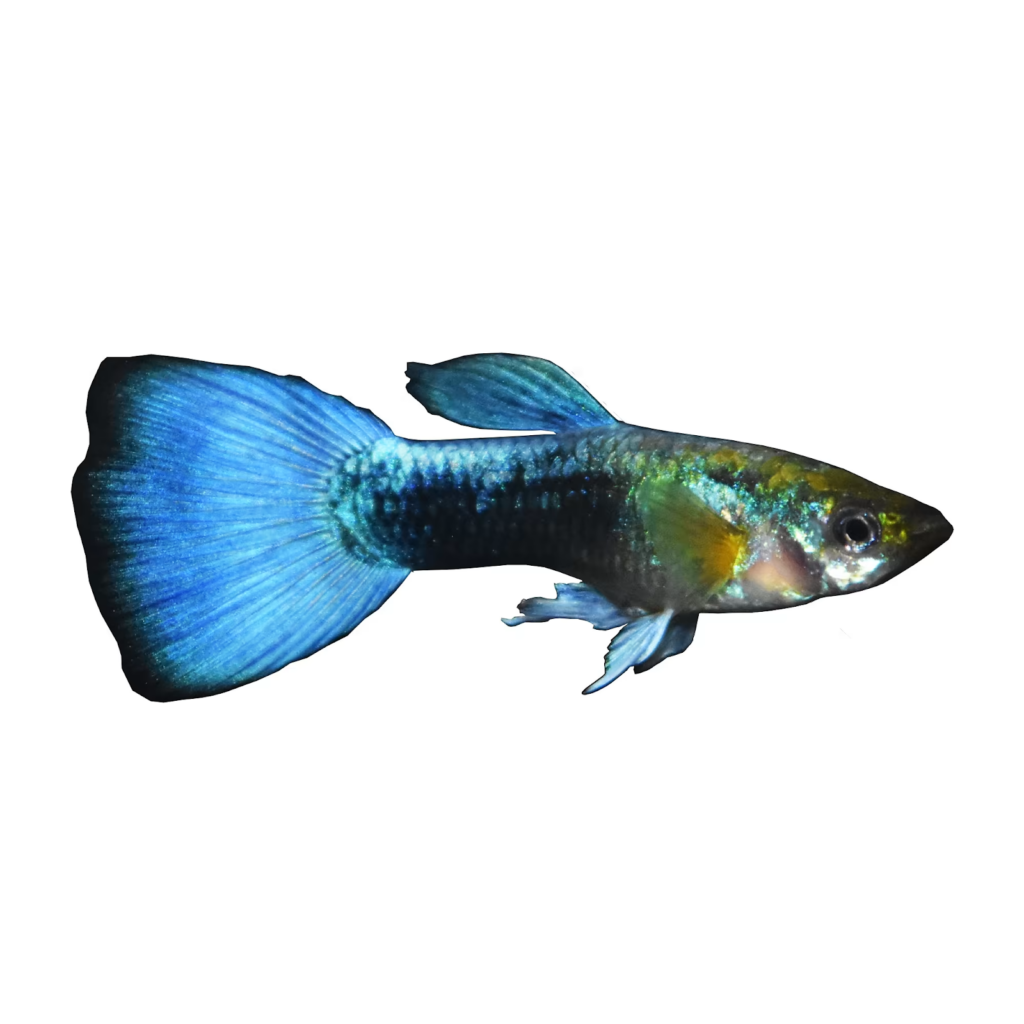
Talking about bright-colored guppies that light up any aquarium, whether personal or public, you can’t miss the Neon Blue Guppy. This blue aquarium fish has an almost fluorescent reflection under white lights, which gives them a unique glow.
Neon Blue Guppy Care Tips
Give your Neon Blue Guppy a regular, vibrant guppy care routine that focuses on maintaining glowing colorations and healthy scales.
Feed them a balanced diet of spirulina supplements, carotenoid foods, and live food like brine shrimp and bloodworms to keep them vibrant and active.
For more on feeding your aquatic pets check out The Ultimate Guide to Fish Food: Pros and Cons & Best Choices!
Red Tail Guppy

Most guppies have multicolored bodies, but not all of them have unique contrasting bodies like the Red Tail Guppy. This colorful tail guppy often has different colored bodies with fiery red tails.
Sometimes, hobbyists call this species the Japanese Red Tail guppies when their scales have a Koi fish orangish tone instead of bright fire red. For this variant, their entire bodies are red, not just their tails. Check them out below.


Red Tail Guppy Care Tips
For your Red Tail tank care, maintain optimal water parameters and feed your pets enough proteins to guarantee healthy tail fin growth.
Regularly check for signs of illness, such as fraying, thinning, and discolored fins, especially the majestic red tail fin.
Snakeskin Guppy

The Snakeskin guppy is another species of exotic guppies popular for having snake-like scales. What makes this one different from other patterned guppy types like the Cobra? It’s the scales of course. Although the Snakeskin guppy also has distinctive scale patterns, they’re not strictly cobra-patterned.
They could resemble any other snakeskin and often have different colors. Some sub-variants of the Snakeskin Guppy include the green snakeskin guppy, red snakeskin guppy, blue tail snakeskin guppy, and blue-metal snakeskin guppy.

Snakeskin Guppy Care Tips
Here’s a brief snakeskin guppy care guide to help you maintain your pet’s scales:
- Keep them in at least 10-gallon tanks.
- Feed them enough live food with commercial flakes to maintain their vibrancy.
- Pair them with fellow peaceful and small fish for a well-integrated community tank.
Tiger Guppy

Another active aquarium fish that you’ll love and reminds you of a wild cat’s coat is the Tiger Guppy. These striped guppies have varying stripe patterns that make it possible for multiple Tiger guppies in one tank to have different scale colorations.
These differences range from stripe patterns to color intensity.
Tiger Guppy Care Tips
If you love your Tiger Guppy to have deeper stripes and patterns, you must incorporate color-enhancing food into their diets. You can also use the patterned guppies and active guppy care tips shared earlier for this variant. They’ll work.
Galaxy Guppy

Do you want your pet to have even more unique guppy patterns? It’s time to look to the galaxy. The Galaxy Guppy has a mesmerizing intricate pattern of stars on its scales, and the base has a darker color than the patterns.
These contrasting spots have made the starry guppies one of the most sought-after exotic guppies worldwide. It’s rare, unlike many other fancy guppies, and requires careful maintenance practices.
Galaxy Guppy Care Tips
You must first ensure you follow all relevant aquarium care tips when keeping the Galaxy guppies. Then, focus on maintaining their contrasting spots by feeding them color-enhancing foods rich in carotenoids.
Some foods rich in carotenoids are blanched spinach, alfalfa, and shellfish. You can also get processed food made specifically for enhancing fish scales, such as commercial flakes and pellets made with carotenoids.
For more on feeding your aquatic pets check out The Ultimate Guide to Fish Food: Pros and Cons & Best Choices!
We’re almost done with the review, so keep reading.
Magenta Guppy

Embrace feminine energy in your tank by adding bright neon Magenta Guppy. It has a bright dark pink scale tone, but under different lighting, this color varies from light pink to deep purple. That’s why some hobbyists classify the Magenta guppy as part of the Purple Guppy type.
If you like having rare guppy varieties that make for great conversation starters and aesthetically pleasing aquariums, follow these aquarium care tips.
Magenta Guppy Care Tips
Magenta Guppies are hardy fish, but because of their fancy pinkish scales, you must strike a balance when setting the water hardness. Stick to moderately hard water that will be as natural as possible to their habitat without becoming harmful to its Magenta body.
Also, practice other fancy fish care methods like filtering your tank with slow filters and changing 20 to 30% of the water levels to remove leftover food and harmful waste.
Black Guppy

Take a deep breath and check out the Black Guppy, which is the star of all dark guppy types. If you love single and dark-colored pets in your aquarium, these solid-colored guppies are ideal occupants.
Being dark doesn’t mean they don’t have vibrancy, so please avoid mistaking dark for dull. You can still keep their scales bold and defined using these relevant
Guppy care tips:
Black Guppy Care Tips
Use a gentle filter to prevent strong currents that can suck in your small fish. Although they’re a dark-toned species, moderate lighting is the best, with a consistent day-night cycle to give them a routine. Failure to regulate their activities with scheduled lighting can lead to aggression or laziness.
If you plan to breed, maintain a good ratio of females to males so you don’t stress your breeders. Create hiding spots in the tank for the incoming fry to grow and survive before integrating into the main aquarium.
Conclusion
I hope you’ve enjoyed this popular guppy varieties review as much as I’ve loved sharing it with you. I’m sure you’re now ready to build your community aquarium with Guppy fish types. Let’s recap the ideal ways to build your aquarium:
- Choosing guppies
Firstly, you must decide which one of the many varieties of guppies you want in your tank. You can go back to the top of this review to see the most popular types and their uniqueness.
- Guppy care tips
Finally, you must use the right care tips depending on your selected variant. Remember that a 10-gallon tank is the bare minimum for a single guppy. Prepare to increase your tank’s capacity as your community grows and implement other care tips like filtration, lighting, proper feeding, and decor.


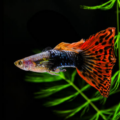

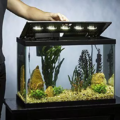
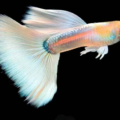
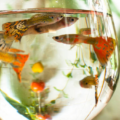
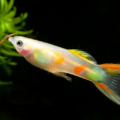



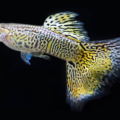
17 thoughts on “Explore the 20 Popular Types of Guppies for Your Aquarium ”